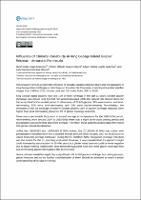Mostrar el registro sencillo del ítem
Influence of Climate Variability in King George Island Glacier Retreat – Antarctic Peninsula
| dc.contributor.author | Rojas Macedo, Ibeth Celia | |
| dc.contributor.author | Suarez, Wilson | |
| dc.contributor.author | Edwin Anibal, Loarte Cadenas | |
| dc.contributor.author | Medina Marcos, Katy Damacia | |
| dc.date.accessioned | 2022-04-04T18:51:04Z | |
| dc.date.available | 2022-04-04T18:51:04Z | |
| dc.date.issued | 2021 | |
| dc.identifier.uri | https://hdl.handle.net/20.500.12542/1899 | |
| dc.description.abstract | This research aims to explain the influence of climatic variables (temperature and precipitation) in King George Island (KGI) glacier shrinkage on the Antarctic Peninsula. It employed Landsat satellite images from 1989 to 2020, climatic data and ONI index from 1980 to 2019. King George Island glaciers have lost 10% of their coverage in the last 31 years. Greater glacier shrinkage was shown until the first mid-period assessed, while the retreat rate slowed down for the second half of the studied period. Furthermore, of 73 KGI glaciers, 37% were marine- and landterminating, 42% were land-terminating and 21% were sea-terminating. Nonetheless, the decreases in the ice-coverage of marine-contact glaciers (35% of glacier coverage reduced) were higher than land-terminating glaciers (17% of glacier coverage reduced). There was a perceivable fluctuation in annual average air temperature for the 1980-2006 period. Nevertheless, from around 2007 to 2015/2016 there was a slight continuous cooling period and precipitation was somewhat above the average. Therefore, these patterns could explain the recent KGI glacier-retreat deceleration. Unlike the 1982/1983 and 1997/1998 El Niño events, the 2015/2016 El Niño was colder with precipitation reduction from the sustained annual amount (since roughly 2007 to 2015/2016) to values below the average. Moreover, during the 2015/2016 El Niño, KGI glacier coverage reduction was the lowest for the 31 year-long evaluated. However, it was revealed that the glacier's height could increase by accumulation in El Niño years, but glacier mass balance could be more negative due to basal melting. Additionally, land-terminating glaciers have lost more glacier coverage than sea-terminating glaciers throughout this ENSO event. Hence, climate variability might play a significant role in KGI glacier shrinkage, but calving process, glacier features and so on, further a combination of them should be assessed to reach a better understanding of KGI glacier retreat. | es_PE |
| dc.format | application/pdf | es_PE |
| dc.language.iso | spa | es_PE |
| dc.publisher | European Geosciences Union | es_PE |
| dc.rights | info:eu-repo/semantics/openAccess | es_PE |
| dc.rights | Atribución-NoComercial-SinDerivadas 3.0 Estados Unidos de América | * |
| dc.rights.uri | http://creativecommons.org/licenses/by-nc-nd/3.0/us/ | * |
| dc.source | Repositorio Institucional - SENAMHI | es_PE |
| dc.source | Servicio Nacional de Meteorología e Hidrología del Perú | es_PE |
| dc.subject | Glaciares | es_PE |
| dc.subject | Antarctic | es_PE |
| dc.title | Influence of Climate Variability in King George Island Glacier Retreat – Antarctic Peninsula | es_PE |
| dc.type | info:eu-repo/semantics/report | es_PE |
| dc.subject.ocde | https://purl.org/pe-repo/ocde/ford#1.05.11 | es_PE |
| dc.publisher.country | PE | es_PE |
| dc.subject.sinia | variabilidad climatica - Clima y Eventos Naturales | |
| dc.type.sinia | text/libro.presentacion | |
| dc.identifier.url | https://hdl.handle.net/20.500.12542/1899 |
Ficheros en el ítem
Este ítem aparece en la(s) siguiente(s) colección(es)
-
Congreso [32]









